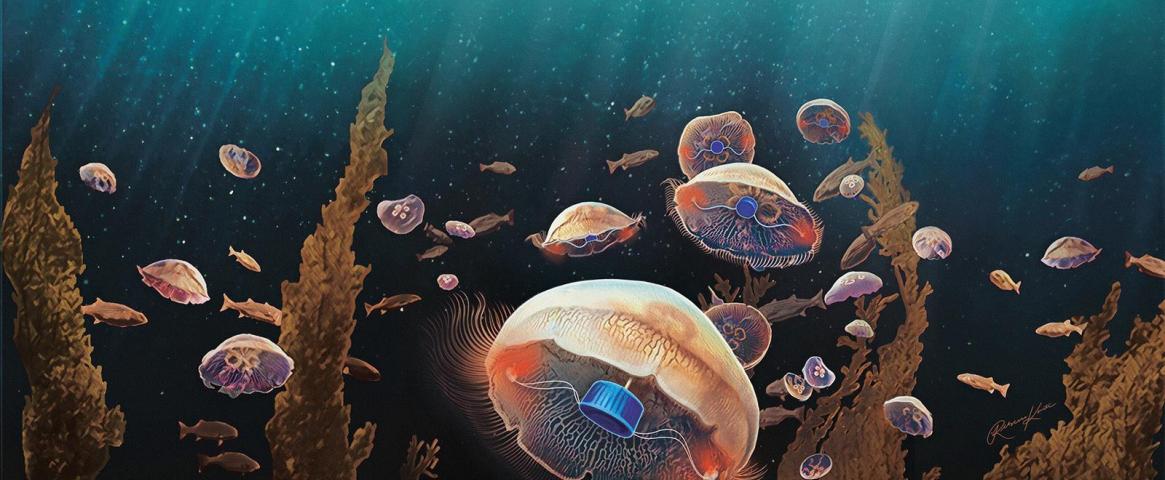By Nadine Wilson. Mentored and edited by Stacy Kish.
Throughout the history of ocean exploration, researchers have struggled to obtain high-resolution ocean measurements, especially in underexplored areas. These ocean measurements provide information about the size of organisms and changes in ocean properties to better understand large-scale dynamics from hurricane formation to the movement of heat and nutrients along the global conveyor belt. All of this data provides insight on the health and functioning of the ocean. The lack of high-resolution data places scientists at a disadvantage to changing events, from the health of marine ecosystems to the ocean’s response to planetary warming.
John O. Dabiri, the Centennial Professor of Aeronautics and Mechanical Engineering at the California Institute of Technology, has developed a non-harmful robotic attachment for jellyfish. This new device allows researchers to potentially access larger ocean regions. But how did the path to robotic jellyfish begin?
Dabiri and his team undertook an extensive study of this ball of floating gelatin to understand how the animals move, feed and live. In order to get a good grasp on the movements of these creatures, the team used a green laser called “Scuba” to obtain precise measurements of the velocity and specific motions that jellyfish create as they move through water. With the new measurements in hand, Dabiri and his team moved to the next step: creating a model of the device.
Dabiri and his team modeled a three-step process that describes a vortex ring that forms as the jellyfish pushes itself through the water. As the jellyfish begin to swim, the animals generate a compulsive wake in the surrounding water. The jellyfish glides throughout the wake of water during its relaxation phase. The process is completed by the contraction phase as the jellyfish pulses away.
The research team developed a device that can mimic these movements. The device, a tissue-engineered biological construct, attaches to the animals so it will not impair their movement or ability to obtain food. The team used biological tissue instead of robotics, because the tissue has access to stored energy reserves and can grow and heal.
Dabiri and his team collaborated with researchers from Harvard University to develop the device. The researchers obtained thin strips of muscle tissue from a rat to create similar movements as jellyfish. They attached the strips of tissue onto a mold the shape of a jellyfish. At this time, the team is taking their prototype device and attaching them to the jellyfish. The prototypes are embedded with tiny electronic devices that can control the direction that the jellyfish swim.
The researchers monitored the jellyfish movement in a lab setting before taking the device into the ocean.
By recruiting a new swarm of ocean explorers, Dabiri hopes to expand ocean exploration. Stay tuned to learn more about what they discover.
Nadine Wilson is a senior journalism student at the University of Florida with a strong interest in oceanography. She is a writer and copy editor for Orange & Blue magazine. Follow her on Twitter @Nadine50955067 or email nadine.wilson@ufl.edu.
Hero photo: Microelectronic devices attached to the undersides of jellyfish aid ocean exploration. Credit: California Institute of Technology.


